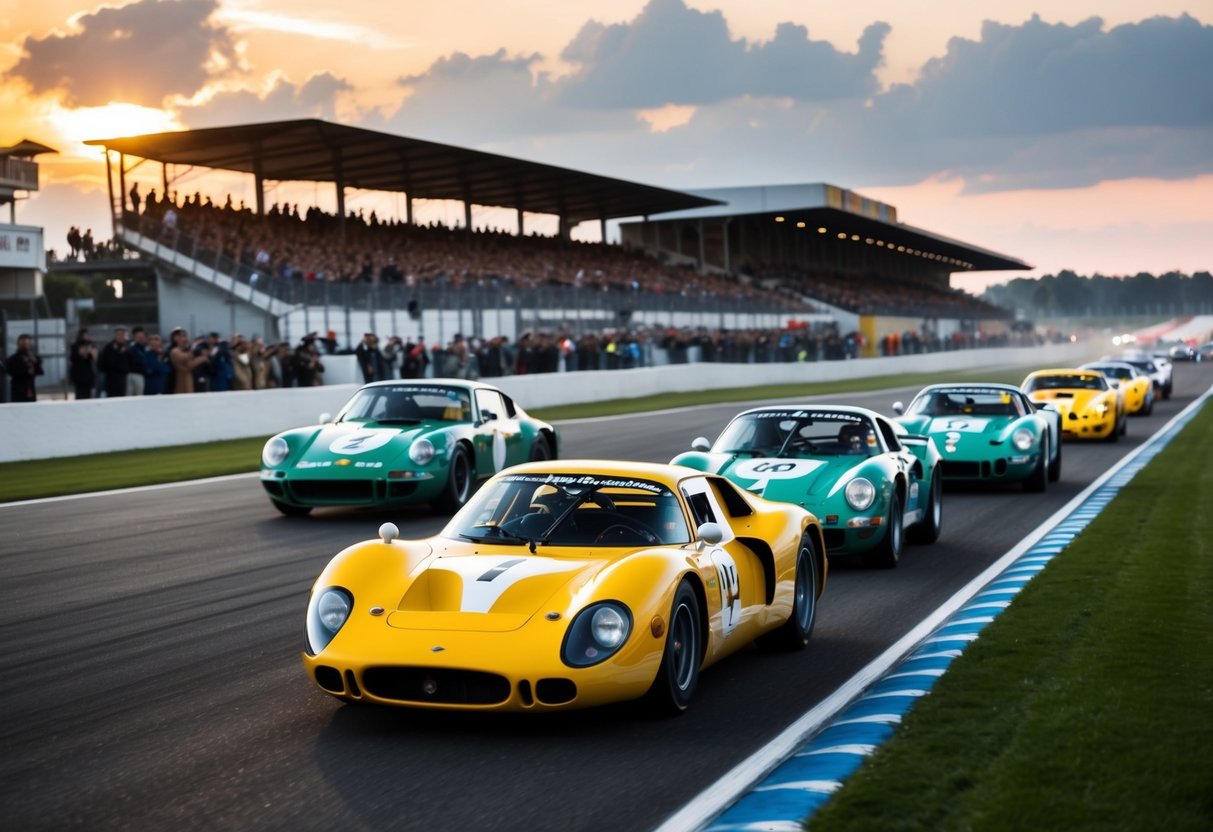
The Evolution of Le Mans Race Cars
The evolution of Le Mans race cars has been marked by significant technological advancements. These developments have led to enhancements in speed, performance, aerodynamics, and safety measures.
Advancements in Speed and Performance
The journey of Le Mans race cars towards greater speed and performance saw notable contributions from several iconic models. The Ford GT40, with its powerful V8 engine, made its mark in the 1960s, combating European dominance with its impressive torque and horsepower. This model played a crucial role in defining what race car speed meant during that era.
Equally vital was the Porsche 917, which debuted at Le Mans in 1969. Its V12 engine delivered an astonishing output that captivated motorsports enthusiasts worldwide. The horsepower generated by these machines set new benchmarks, thrusting Le Mans into a rapid evolution. As technology evolved, efforts toward maximizing efficiency without compromising speed became key priorities for manufacturers.
Development of Aerodynamics and Safety
The development of aerodynamics and safety has been fundamental in the evolution of Le Mans race cars. Aerodynamics became central, with manufacturers refining car shapes to reduce drag and enhance stability. Cars like the Porsche 917 incorporated aerodynamic innovations, producing crucial advancements that increased speed through better air management.
Safety standards also evolved significantly over the years. The integration of roll cages, six-point seat belts, and advanced helmet designs helped mitigate risks for drivers. The pursuit of safety became as crucial as performance, with measures such as the use of carbon fiber and reinforced chassis playing a major role in protecting drivers while maintaining competitive speeds. These dual focuses have transformed the landscape of Le Mans racing dramatically.
The Iconic Decades: 1960s to the 1980s
The period from the 1960s to the 1980s in Le Mans history was defined by intense rivalries and groundbreaking technological innovations. Key highlights include the fierce battles between Ford and Ferrari and Porsche dominating with their 917s and 956/962s.
Ford Versus Ferrari Rivalry
The rivalry began in the 1960s. After a failed merger between Ford and Ferrari, Ford poured resources into a racing program to defeat Ferrari at Le Mans. The result was the GT40, which made history with four consecutive wins from 1966 to 1969. Ferrari, known for its craftsmanship and racing heritage, fiercely contended with its 330 P series, but Ford’s persistence and engineering won out in this iconic clash. The intense competition sparked innovations and amplified the allure of endurance racing.
Porsche’s Reign with the 917s and 956/962s
Porsche emerged as a dominant force, starting with the 917 in the late 1960s. The 917 shattered records with its impressive speed and engineering. This era saw the 917 achieve multiple victories, notably in 1970 and 1971. Later, the 956 and its successor, the 962, continued this dominance throughout the 1980s. Their design innovations set new standards for efficiency and performance in motorsport. These models solidified Porsche’s legacy at Le Mans, winning repeatedly and influencing future race car development.
Group C and the Prototype Revolution
The introduction of Group C regulations in 1982 marked a new era in endurance racing. Emphasizing fuel efficiency and technological prowess, this class encouraged manufacturers to innovate. Racing cars like the Porsche 956 and 962 became iconic during this time. These vehicles thrived under Group C rules, showcasing advanced aerodynamics and groundbreaking engineering. This period initiated the prototype revolution, elevating Le Mans as a showcase for cutting-edge automotive technology. Group C cars not only captivated fans but also pushed the boundaries of what racing cars could achieve.
Le Mans and the Pursuit of Speed
The pursuit of speed at Le Mans has driven technological advancements and defined motorsports history. Iconic moments pushed racing boundaries while specific tracks challenged the limits of engineering and bravery.



